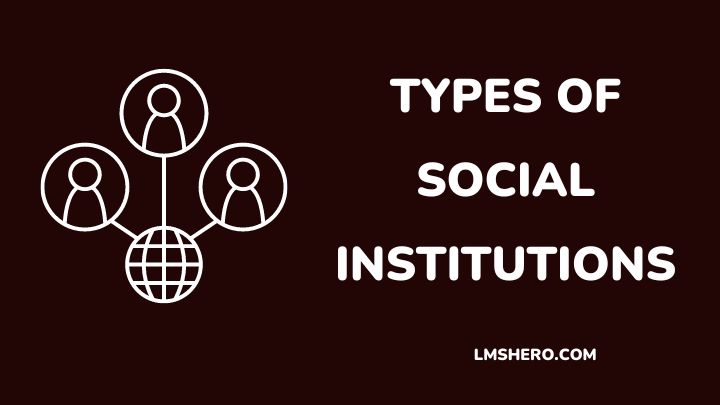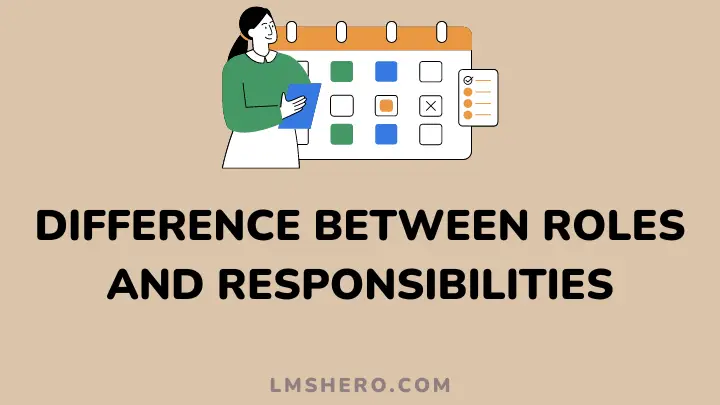In modern societies, people’s lives are often shaped and defined by different types of social institutions, such as the government, schools, economic institutions (banks, stock market), religious institutions, etc.
These social institutions are required to keep society structured and functioning to ensure the survival of all members of society.
Furthermore, social institutions foster general stability by setting predictable patterns of interaction based on mutual expectations.
In this article, I will explain what social institutions are and give examples of different social institutions we have in society.
Read to learn more.
A social institution is a group of people who share common goals and have created stable patterns of interactions based on what is expected from each other which fosters a healthy relationship.
Social institutions are interconnected systems of social norms and roles that are organized and possess behavioral patterns of interaction that contribute to the core social needs of society.
However, because social institutions are interconnected and have patterns, changes to one social institution can have an impact on the other.
For example, family, a social institution, is heavily linked to education, which is another social institution. If schools are closed due to a pandemic, the family social institution will be affected.
In general, every social institution shares similar defined goals, practices, customs, and rules to shape each of its members and provide for their basic needs.
The following are some types of basic social institutions and their functions:
1. The Family
Typically, the family is the fundamental unit of every society and is generally recognized as the primary social institution.
The family institution determines kinship, which is the blood or marital relation of one family member to another, and it is every child’s initial introduction to society.
The family performs different societal functions and is crucial for the survival and well-being of every member of society.
The following are the primary goals of the family:
- To protect the children
- To nurture the children with love
- Teach life skills and social interaction, etc
2. Economic institution
The economic, or market institutions, is another type of social institution. This institution covers the buying and selling industry.
Economic institutions afford people the opportunity to support themselves and their families, as well as aid in the buying and selling of goods and services.
Examples of economic institutions include; Banking firms, credit unions, insurance companies, the stock market, and so on.
3. Religious institutions

Even though not everyone belongs to a religious group, religious institution is part of every human society.
While there may be more than one religious institution in society, they serve the same purpose. And they exist to reinforce the norms and values of a society’s rules. Belonging to any brings people together into a community, even within other groups.
Furthermore, the role of the religious institution in society gives stability and function, including a cohesive system of beliefs, symbols, conventions, and specialized traditions that guide the human behavior of the religious institution’s community.
Examples of religious institutions include; churches, mosques, monasteries, dioceses, totems, temples, and so on.
4. Educational Institutions
Typically, educational institutions teach skills and knowledge. Similar to family institutions, educational institutions instill the next generation with the skills necessary to properly engage in society.
The educational institution is considered to be continuous, as professionals who work in educational institutions, such as teachers, instructors, and professors, have gone through the same institution themselves.
As a result, they possess the right approach for the next generation for the majority of societal occupations, including educational careers.
Examples of educational institutions are; elementary schools, middle schools, high schools, school districts, community colleges, graduate schools, junior colleges, technical colleges, etc.
5. Government Institutions
The state or government is another important social institution in society. Every society has a power structure that makes decisions on behalf of its citizens.
However, how every country operates is determined by the kind of government. In many modern cultures, the government institution exercises influential power over the daily lives of its citizens, whilst some governments allow the practice of civil rights.
Other Types of Social Institutions
While the aforementioned social institutions are present in all human civilizations, they are by no means the only ones.
In some or most contemporary societies, there are other social institutions or communities, and they contribute to the growth and development of society for the benefit of its citizens.
1. Community
A community is a group of people living in the same geographical location and governed by the same authority. Examples of communities include; boroughs, burgs, castle towns, cities, hamlets, metropolia, suburbs, villages, etc.
However, other communities are not characterized by their location, but rather by similar interests and passions shared by different people. Examples include senior living communities, the LGBT community, the nudist community, etc.
2. Cultural or Ethnic Groups
Ethnic or cultural groups are social institutions made up of extended family groups related by a distant, common ancestry.
Typically, people from the same ethnic group can share common experiences in their social institutions regardless of their familial ties.
Examples include; Black Americans, Asians, Hispanics, The Pacific Islands, Navajo people, etc.
3. Community Service Organizations
There are organizations within communities that help address social issues and are often funded by local governments to serve the greater good.
Examples of community service organizations include; Big Brothers and Big Sisters of America, Boy Scouts, Girl Guides, Rotary clubs, Kiwanis, etc
4. Judicial System and Legal Institutions
The judicial system or legal institutions is yet another institution, typically controlled by the government. However, some there are societies separate these institutions.
Examples include Supreme courts, district courts, tribunals, state courts, etc.
5. Mass Media Institutions
The media influences the communication and opinion of the populace. However, human beings are not exposed to the same degree of media saturation.
Examples of media institutions include broadcasting corporations, the filming industry, the music industry, newspapers, etc.
6. Social Welfare Institutions
These institutions ensure the social welfare of people across the world, such as non-profit and charitable organizations. Similar to community service institutions, but are not limited to a single community.
Examples include: the Cancer Research Society, American Catholic Charities, YMCA, Feeding the Hungry Goodwill Industries America’s International Humane Society, American Society for the Prevention of Cruelty to Animals (ASPCA), etc
FAQs
What makes a social institution?
Social institutions are created and maintained by the collective approval of common individuals.
What impact do social institutions have on society?
Social institutions are the backbone of every community. Social institutions impact the economic, academic, and interpersonal achievements of every society.
What is the most important social institution?
The most important social institution is the family.
Conclusion
Social institutions, such as the government, economics, education, family, healthcare, religion, etc are systems or patterns of societal order that serve to meet the social demands of people in society.
Moreover, the purpose of social institutions is to help individuals realize their full potential within society, and they are the essential components for the growth and development of every human society.
I hope you found this article interesting. You can also read to know the definition and learn some examples of social roles.
Thanks for reading.






